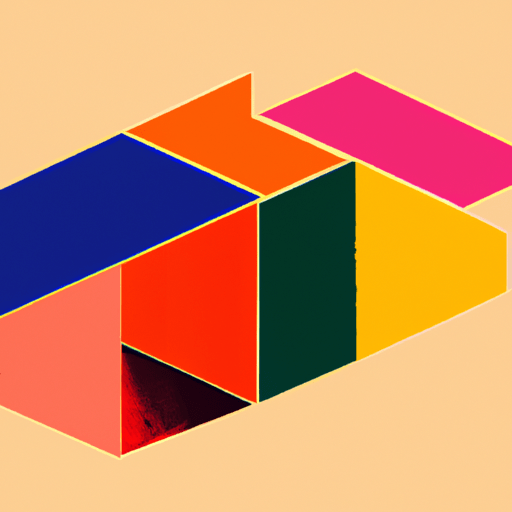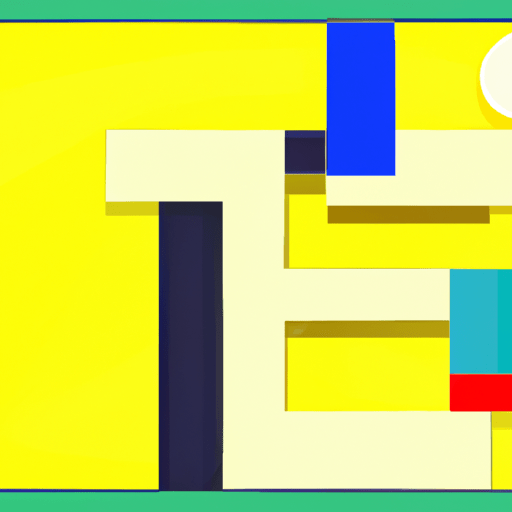
-
Table of Contents
The Use of Geometric Abstraction in Contemporary Art

Contemporary art is a diverse and ever-evolving field that encompasses a wide range of styles, techniques, and themes. One prominent trend within contemporary art is the use of geometric abstraction. Geometric abstraction refers to the use of geometric shapes, lines, and forms to create artworks that emphasize simplicity, precision, and order. This article explores the significance of geometric abstraction in contemporary art, its historical roots, and its impact on the art world today.
The Historical Roots of Geometric Abstraction
Geometric abstraction has its roots in the early 20th century, particularly in the movements of Constructivism and De Stijl. Constructivism emerged in Russia in the aftermath of the Russian Revolution, with artists such as Kazimir Malevich and Vladimir Tatlin exploring the use of geometric forms to express the ideals of the new Soviet state. De Stijl, on the other hand, originated in the Netherlands and was characterized by its emphasis on simplicity, clarity, and the use of primary colors.
These early movements laid the foundation for the development of geometric abstraction as a distinct style within modern art. Artists began to experiment with geometric shapes and forms, rejecting representational art in favor of a more abstract and conceptual approach. The use of geometric abstraction allowed artists to explore ideas of balance, harmony, and order, while also challenging traditional notions of artistic representation.
The Significance of Geometric Abstraction in Contemporary Art
Geometric abstraction continues to be a significant and influential style within contemporary art. Its appeal lies in its ability to convey complex ideas and emotions through simple and precise forms. By reducing the visual elements to their basic geometric components, artists are able to create artworks that are visually striking and intellectually engaging.
One of the key aspects of geometric abstraction is its emphasis on structure and composition. Artists carefully arrange geometric shapes and lines to create a sense of balance and harmony within the artwork. This attention to structure not only creates visually pleasing compositions but also allows artists to explore ideas of order and symmetry.
Another important aspect of geometric abstraction is its universality. Geometric shapes and forms are found in nature, architecture, and various cultural traditions. By using these universal forms, artists are able to create artworks that transcend cultural and temporal boundaries. Geometric abstraction has the power to communicate across different cultures and languages, making it a truly global art form.
Examples of Geometric Abstraction in Contemporary Art
There are numerous contemporary artists who have embraced geometric abstraction as a central theme in their work. One such artist is Carmen Herrera, a Cuban-American painter known for her bold and vibrant geometric compositions. Herrera’s artworks often feature clean lines, sharp angles, and contrasting colors, creating a sense of dynamic tension and energy.
Another notable artist working with geometric abstraction is Bridget Riley, a British painter associated with the Op Art movement. Riley’s artworks create optical illusions through the use of repetitive geometric patterns. Her paintings often appear to be in motion, creating a sense of visual instability and disorientation.
Case Study: The Influence of Geometric Abstraction on Architecture
Geometric abstraction has not only influenced the world of visual art but has also had a significant impact on architecture. Architects such as Le Corbusier and Ludwig Mies van der Rohe embraced the principles of geometric abstraction in their designs, creating buildings that were characterized by clean lines, simple forms, and a sense of order.
One notable example is the Villa Savoye, designed by Le Corbusier in the 1920s. The building features a simple rectangular form, with clean lines and a minimalistic aesthetic. The use of geometric abstraction in architecture allows for efficient use of space and creates a sense of harmony between the building and its surroundings.
The Impact of Geometric Abstraction on the Art World Today
Geometric abstraction continues to be a significant and influential style within contemporary art. Its impact can be seen in various art forms, including painting, sculpture, and installation art. The use of geometric shapes and forms allows artists to explore a wide range of themes and ideas, from the nature of perception and reality to the relationship between art and mathematics.
One of the reasons for the enduring popularity of geometric abstraction is its ability to engage viewers on both an intellectual and emotional level. The simplicity and precision of geometric forms can evoke a sense of calm and order, while also challenging viewers to question their perceptions and assumptions.
Furthermore, geometric abstraction has also found a place in popular culture, with its influence evident in graphic design, fashion, and interior design. The clean lines and bold colors associated with geometric abstraction have become synonymous with modernity and sophistication.
Summary
Geometric abstraction is a significant and influential style within contemporary art. Its historical roots can be traced back to the early 20th century, with movements such as Constructivism and De Stijl laying the foundation for its development. Geometric abstraction allows artists to explore ideas of structure, composition, and universality, creating artworks that are visually striking and intellectually engaging.
Contemporary artists such as Carmen Herrera and Bridget Riley continue to embrace geometric abstraction as a central theme in their work, while architects like Le Corbusier and Ludwig Mies van der Rohe have incorporated its principles into their designs. The impact of geometric abstraction can be seen in various art forms and has also found a place in popular culture.
Overall, geometric abstraction is a powerful and versatile style that continues to shape and inspire the art world today. Its ability to convey complex ideas through simple forms and its universal appeal make it a truly timeless and enduring art form.
